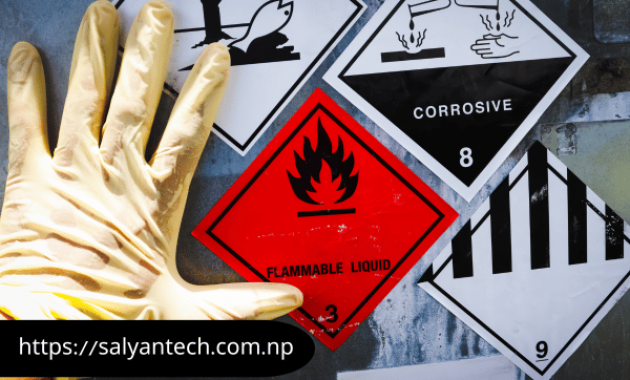Divine Enterprises Inc. specializes in the safe transport of hazardous materials, using advanced technology and strict safety protocols to ensure compliance with regulations and secure delivery across the US and Canada.
Hazardous substances can be considered as those that, on improper handling, are a potential hazard to the people, property, or the environment. There are typically five classes of hazardous substances, including flammable, explosive, toxic, corrosive, and reactive. Each of these requires different handling, storage, and transport requirements to avoid the associated risks. Knowing these classes helps in developing tailor-made safety protocols.
In the complex world of transporting hazardous substances across the continental US and Canada, choosing the right logistics partner is crucial. Divine Enterprises Inc. is a well-established transportation company with years of experience in providing qualified freight transport services. Specializing in safe and reliable logistics solutions, Divine Enterprises ensures that your hazardous materials are handled with the utmost care and expertise, meeting all regulatory requirements and safety standards. Trust us to deliver your cargo safely and efficiently, wherever it needs to go. Read more information here: https://www.divinetrans.com/.
Laws and Regulations for Transport
The movement of hazardous chemicals is under heavy regulation worldwide. Major regulatory frameworks fall under the International Maritime Dangerous Goods (IMDG) Code, US Department of Transportation (DOT) regulations, and the European Agreement regarding the International Carriage of Dangerous Goods by Road (ADR). They prescribe packaging, labeling, and handling procedures to be assured in transport safety. They are always updated for new challenges.
Hazardous Chemicals: Transportation Best Practices
Advanced Packages and Container Technologies
With the advancement of technology, packaging and containers are also being advanced to house hazardous substances. Innovations like double-walled containers and chemically resistant materials are becoming the norm. Other than the aspect of leak-proofing, such technological applications also protect the contents from environmental conditions that can cause a dangerous reaction. For example, the presence of smart containers with a pressure-release valve and corrosion-resistant coatings acts as an extra layer of protection.
How Technology Has Been Used in the Transport Sector
State-of-the-art modern hazardous material transport systems take advantage of the numerous technologies that greatly increase safety and efficiency in the movement and movement of these materials. Among them are IoT sensors that monitor conditions in real time, such as temperature, humidity, and chemical stability, which immediately alert logistics operators of potential safety issues. GPS tracking and real-time monitoring systems ensure that the vehicles are routed in the most secure and effective manner possible. It is a kind of system that should allow immediate response in case of eventualities or in the deployment of emergency services for re-routing.
Trainings and safety protocols of staff
Design and Integration of Safety Protocols
Safety protocols should not only be in place to ensure the safe transportation of the chemicals themselves, but should also detail emergency response plans. This may also entail checking the risks on a routine basis and instituting more strict programs for the containment of spills. For instance, a properly designed emergency plan does not just give details on how a spill is to be contained but engages local emergency services and community alert notification in a bid to cut down on impacts to public safety and the environment.
Training and Certification of Handlers
Hazardous chemicals require some level of expertise. Consequently, people entrust with the transportation of such materials need intensive training and certification in accordance with the law. The areas of training in which employees should be acquainted are material handling, emergency preparedness, and safety precautions. Frequent refresher courses help to keep all employees abreast with recent safety practices and laws.
FAQ and Answers
1.What are the most common hazards when shipping hazardous chemicals?
The primary possible risks are spillages, unintended reactions, and exposures that could provoke fire, explosions, environmental damage, and health hazards.
2.How is technology used to mitigate the level of risks incurred in the conveyance of hazardous substances?
Coupled with technology, real-time monitoring of such a transport environment and the condition of cargo is possible to contribute toward the management of potential risks.
3.What should the transporter of hazardous materials be fully aware of with respect to the law?
Transporters should be subject to local, national, and international regulations, including documentation, vehicle standards, and driver qualifications.
4.How frequently should training and protocols be updated to provide for safety?
Safety protocols and training should be reviewed and updated every year or as often as is necessary, considering substantial changes in regulations, incidents, or technological advances.
5.How can absolute safety regulation compliance be ensured by firms?
Audits at regular intervals, constant training programs, and staying abreast of regulatory changes are extremely important.
It is the integration of these advanced technologies and strict safety protocols that continue to push for safety and efficiency in the transportation of chemically hazardous substances for protection across mankind and the environment in general.
Read Also: Tineco vs Traditional Vacuum
